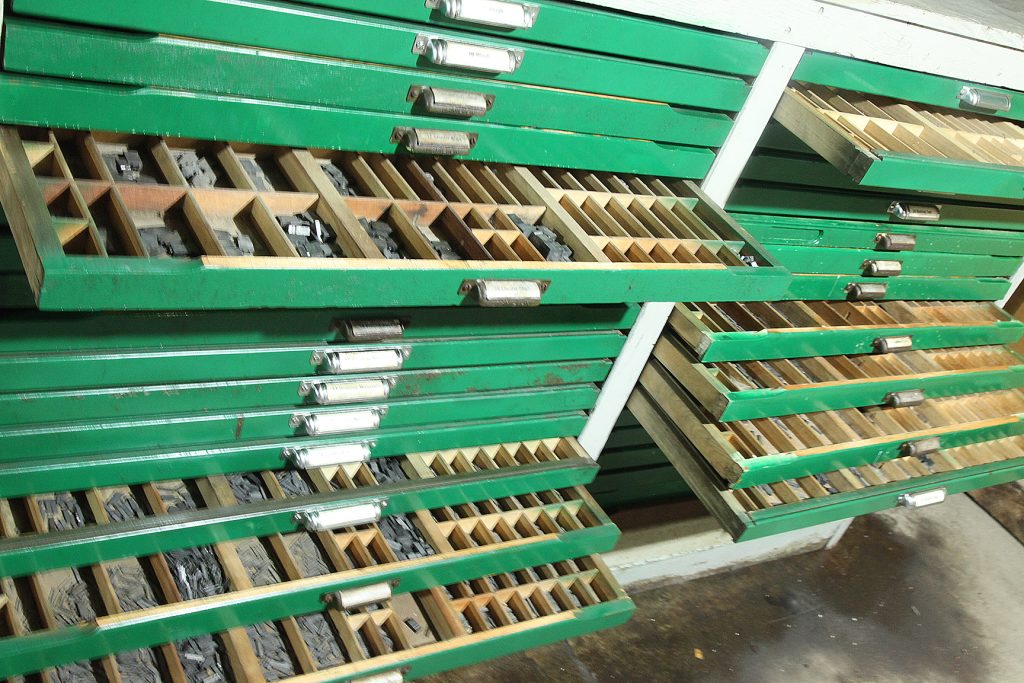The Printing Revolution started in Germany around 1440, when Johannes Gutenberg invented moveable-type printing presses.
As a Journalism major, I spent hundreds of hours at the Printing and Journalism Building on the campus of South Dakota State University. Even the building name put “printing” before “journalism.” We toured the now-ancient press room, learned the basics of printing, and then went back “upstairs” to learn how to be journalists.
That’s where my love of the printing process started. The hands-on machinery, the moveable type and the California job cases. Oh, the California job cases: drawer upon drawer holding the tiny, individual letters used to make words, sentences, paragraphs and finally, newspaper pages. The type was sorted by Upper and Lower Case (still used in copy editing, by the way), by quantities needed. Trivia note: the “e” compartment was one of the largest the compartments because it’s the letter used most frequently in the English language.
Today, Gutenberg’s moveable type is a thing of the past. Digital documents are taking over the world. I’ve sold far more e-books than printed books, but it’s difficult to sign an e-book at a book signing. (Apparently no one wants my signature on their tablet…) Although after some research, I’ve found an app for that — of course.
But the printing process — applying ink to paper — is still “a thing.” There’s nothing like walking through a working press room, smelling the ink, hearing the wrrr of the machinery, and seeing the final, printed sheet appear at the end of the huge printing press.
There is a magic to it.

